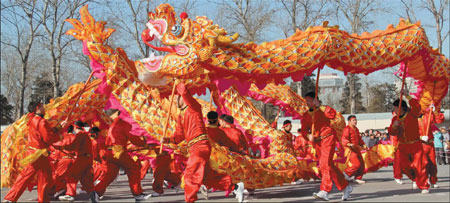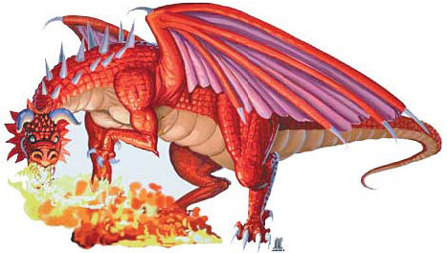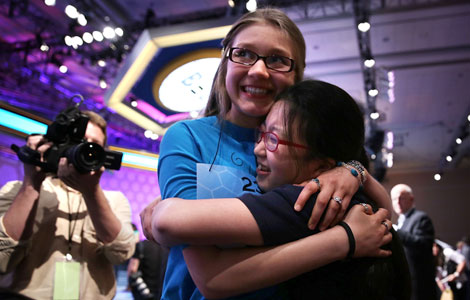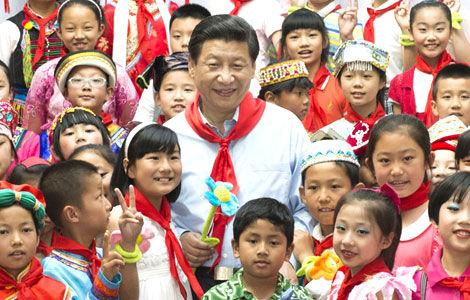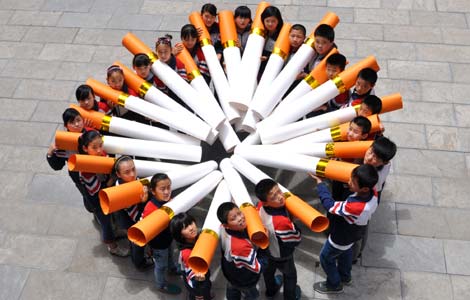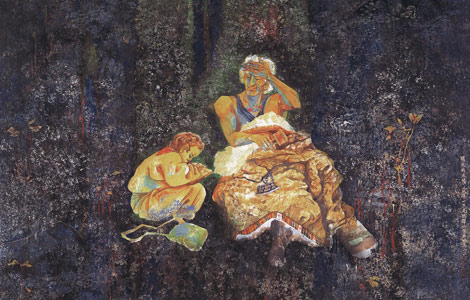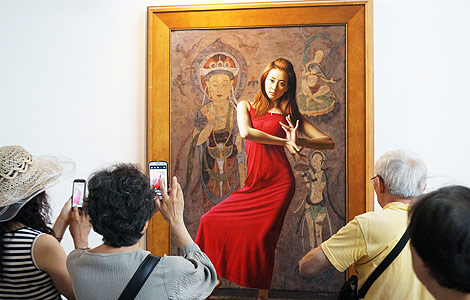Chinese dragon vs Western dragon
Updated: 2013-05-31 13:29
By Zhu Beijing (China Daily)
|
||||||||
|
The Chinese perform the dragon dance to celebrate holidays. The dragon is an auspicious creature that symbolizes strength and wisdom in Chinese culture. Provided to China Daily |
|
The Western dragon is a far different beast from its Chinese counterpart. |
Very different creatures both noted in ancient folklore
The Chinese dragon is a far different beast from its Western counterpart. Smaug from J.R.R. Tolkien's The Hobbit is perhaps the most widely known dragon from recent Western fiction, a cruel, avaricious and bloodthirsty creature whose lair under the Lonely Mountain identifies him as a creature of the earth. Tolkien drew much of his inspiration for Smaug from the dragon in the old English epic of Beowulf, penned more than a thousand years earlier, which gives some indication of the depth of the European tradition of portraying dragons as bad news.
By contrast, the Chinese dragon is an auspicious creature, symbolizing strength, wisdom, good luck and power over the elements of wind and water. As such, Chinese people proudly claim they are the descendants of the dragon, a story that is firmly rooted in national folklore and history. For example, an anecdote in the Records of the Grand Historian (《史记》shǐjì) traces the birth of Liu Bang, the first emperor of the Western Han Dynasty (206 BC-AD 24): One day, his mother falls asleep at a riverside and dreams of a dragon lying on her body, only to wake up and find herself pregnant. Traces of the anecdote survived in the belief that a dragon appearing in a pregnant mother's dream was an auspicious sign indicating she would give birth to a future emperor.
Indeed, China's feudal rulers did everything they could to maintain this mythic association, surrounding themselves with dragon-related ornamentation, ruling from a dragon throne and waging war under a dragon flag. Pretty much everything related to the emperor would be tagged with the character "龙", for example, "龙袍" (lóngpáo, imperial robes embroidered with curling dragons), "龙椅" (lóng yǐ, the emperor's seat), "龙床" (lóngchuáng, the emperor's bed) and "龙颜" (lóngyán, the look of an emperor).
While Smaug and other European dragons have a solid, serpentine connection to the earth, Chinese dragons are indisputably rulers of the sky. The dragon was worshiped as the God of Rain (雨神, yǔshén), and in times of drought or flooding, locals would visit a dragon-king temple (龙王庙 lóngwángmiào) and burn incense to pray for more favorable conditions. It is also said that natural disasters such as floods or tornados (龙卷风 lóngjuǎnfēng, literally, the dragon rolls up the wind) indicate the dragon king is in bad temper.
Dragons' association with thunder, lightening and rain may have prompted the widespread belief that there are more likely to be a flurry of natural disasters in the Year of the Dragon, and Chinese New Year celebrations the world over will include ceremonies and prayers dedicated to warding off the possibility of such a calamity striking people's homes.
The dragon's power to control rain and waves is also closely related to its rank in the pantheon of 12 zodiac animals (rat, ox, tiger, rabbit, dragon, snake, horse, sheep, monkey, cock, dog and pig). Various tales describe the race of these 12 animals to secure their place on the list, but the sequence is determined by the time of day the animal is most active, at least in the eyes of the ancient Chinese. The dragon corresponds to 7 am to 9 am, when it is most likely to be foggy, allowing the dragon to ride atop clouds and mist. However, parts of the dragon are usually hidden in the heavy fog, giving rise to the phrase "神龙见首不见尾"("you see the head of the mystical dragon but not its tail"), which now refers to someone who has no fixed whereabouts and is difficult for others to trace.
In Chinese folk art paper-cuts, a typical pattern shows the dragon riding on clouds. Another depicts two dragons playing with a pearl (双龙戏珠 shuānglóngxìzhū), which is often inlaid with a dark, comma-like symbol running through the middle, thought to represent the unification of yin and yang. In Chinese calligraphy, the flying dragon is an aesthetically appealing analogy for cursive and elegant handwriting known as "龙飞凤舞", literally, "dragons flying and phoenixes dancing". Given all the positive associations of "龙", it is no wonder the character is a top choice for people's names, including martial arts superstars Jackie Chan
(成龙) and Bruce Lee (李小龙). There is also the Chinese idiom, "望子成龙" (literally, hoping one's son will become a dragon), which roughly correlates with meaning parents have high expectations of their children.
However, few parents would want their children to be aggressive leaders involved in violence. This is the image that struck many Chinese upon seeing the new dragon stamp issued by China Post. "Evil and frightening"
(凶神恶煞 xiōngshén'èshà), "baring fangs and brandishing paws" (张牙舞爪 zhāngyáwǔzhǎo) and "bristling with anger" (怒发冲冠 nùfàchōngguān) were just a few of the phrases people responded with when being asked for their first impression of the new stamp.
People born in the Year of the Dragon are said to be natural leaders - charismatic, innovative, free-spirited, and flamboyant, and as such Dragon years are notorious for coinciding with spikes in the birth rate. It remains to be seen whether modern Chinese remain as much in the thrall of dragon worship as their ancestors, and if the phenomenon holds true in the 21st century.
Courtesy of The World of Chinese,
www.theworldofchinese.com
The World of Chinese
(China Daily USA 05/31/2013 page14)
Most Viewed
Editor's Picks

|

|

|

|
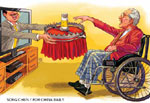
|

|
Today's Top News
Xi leaves for Latin America, the Caribbean
US 1, China 21 in competitiveness
China corrects Japan on treaty's Diaoyu implications
Manila condemned over warship
Meeting proposes hope for Syria
Threatening letter sent to Obama
New Russian envoy vows to boost relations
EU to step up investment in China
US Weekly

|

|
